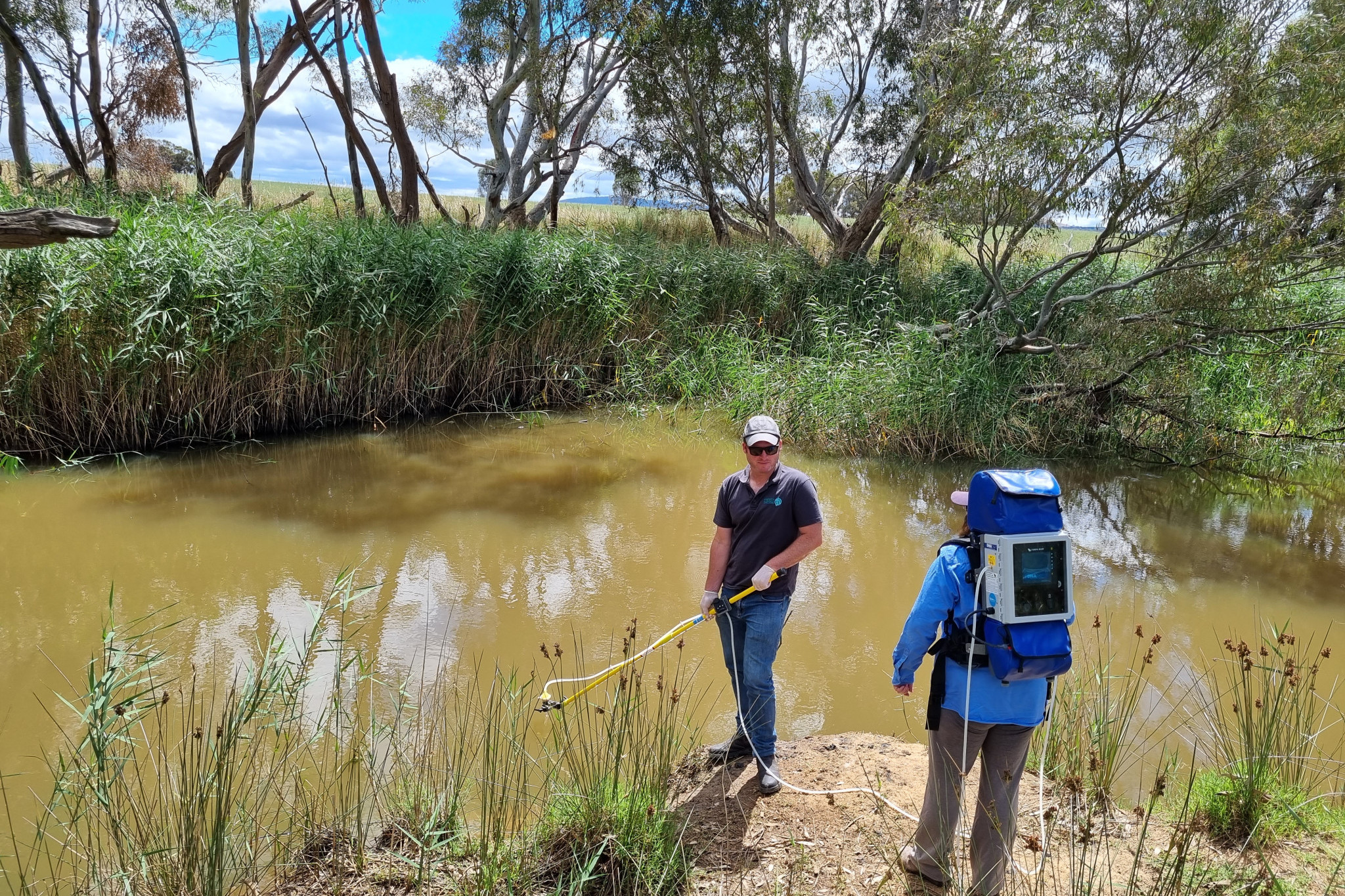General News
26 March, 2025
Cutting-edge technology aids research
Project Platypus has employed the latest environmental DNA (eDNA) technology to test local waterways, uncovering vital insights into the region’s native wildlife.

Project Platypus has employed the latest environmental DNA (eDNA) technology to test local waterways, uncovering vital insights into the region’s native wildlife.
The innovative technology, which has significantly advanced in the last two years, allows scientists to detect up to 70 different animal species from a single water sample. This includes fish, frogs, turtles, birds, and mammals, such as the elusive platypus.
Project Platypus Manager Mark McLean described the results as highly encouraging, with native fish species such as Perch, Gudgeon, Galaxias, and Smelt detected in 96% of tested locations. “This was an amazing result as it showed that majority of our waterways are providing important habitat for our native fish. These species are quite small and hard to find without eDNA technology,” he said.
The testing also identified two rare waterbird species, Lewin’s Rail and Musk Duck, in locations with large waterholes and native vegetation. “These findings confirm that sections of our waterways support a diversity of native species,” Mr McLean said.
The research was carried out with the help of the Wimmera Catchment Management Authority, using their eDNA backpack sampler, a device Mr McLean likened to something from a movie. “The backpack looks a lot like something out of a Ghostbusters movie and can draw up to 5L of water for each sample. This is a big improvement on the older methods which were able to sample smaller amounts of water,” he explained.
Project Platypus sampled 24 sites across the Upper Wimmera Catchment, including the Wimmera River, Mount Cole Creek, Rocky Creek, Nowhere Creek and Mount William Creek. While the study revealed strong native fish populations, no platypus DNA was detected, raising concerns about their status in the region.
“This was disappointing, especially since we’ve had recent sightings reported. It’s possible further testing may still find them.” Mr McLean said.
The data collected will help guide habitat protection projects, with Project Platypus working alongside local groups and the Wimmera Catchment Management Authority to identify priority areas. “We look forward to working with local Landcare Groups and the Wimmera Catchment Management Authority to identify areas for potential projects that help protect our native fish and bird species,” said Mr McLean.
A community information session will be held at Warrak Hall on March 27 to share the findings in greater detail.
For more information or to register, visit platypus.org.au/events.